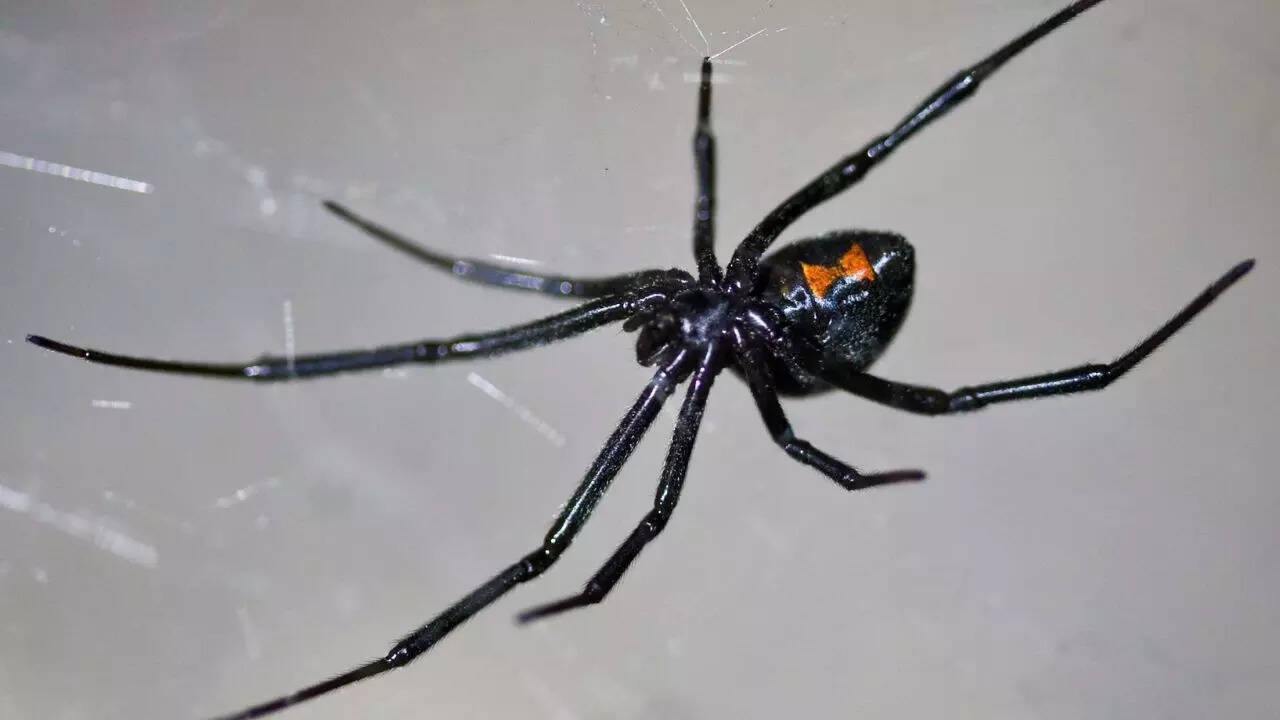ARTICLE AD BOX

Male and female black widow spiders may belong to the same species, but they are far from identical. From size and colour to behaviour and lifespan, these spiders display some of the most striking examples of sexual dimorphism in the animal world.
The female black widow is well known for her glossy black body and bright red hourglass marking, a symbol of both beauty and danger. In contrast, the male is smaller, lighter in colour, and much less threatening in appearance. According to a study published in the BMC Ecology and Evolution journal, female black widows exhibit greater size, dominance, and mating control, traits linked to reproductive success and survival advantages. Understanding how these two differ not only reveals fascinating aspects of spider biology but also helps in safely identifying them in the wild or at home.
Male vs female black widow spiders: Why females are much larger in size

Source: Wikipedia
One of the most obvious differences between male and female black widow spiders is size. The female outgrows the male by a significant margin, often reaching two to three times his length and up to ten times his weight. Female black widows typically measure between 1.5 and 2 inches in body length, excluding legs, while males barely reach 1 inch.This size difference is largely biological. Female black widows must produce and carry eggs, which explains their larger and more robust body.
Their abdomen is rounder and bulkier, designed to store and protect hundreds of eggs at a time. In contrast, males are smaller and more slender, allowing them to move quickly in search of mates and avoid becoming prey.The size gap also plays a role in their survival dynamics. Females dominate the web, while males spend most of their short adult lives seeking mates. This biological imbalance not only affects how they look but also how they live and interact.
Male vs female black widow spiders: How to identify them by appearance
Beyond size, colour and markings make it easy to tell a male and female black widow apart. Female black widow spiders are famous for their glossy black bodies and the bright red hourglass marking on the underside of their abdomen, a clear warning sign to predators and humans alike.Males, on the other hand, are brown or grey with lighter, sometimes reddish spots on the top of their abdomen. They may also have faint white stripes on their legs or abdomen, particularly as they mature.
Unlike females, their bodies lack the dark, shiny sheen, and they appear less menacing.Interestingly, while the female’s hourglass shape is distinctive, some adult females of certain species (such as Latrodectus variolus and Latrodectus hesperus) may also have small dorsal red or orange spots on their upper side. Males, however, rarely develop such vivid markings. Their longer legs in proportion to body size help them navigate webs and escape quickly, an evolutionary advantage considering the female’s occasional aggression during mating.

Source: National Geographic
Male vs female black widow spiders: How their behaviours differ
Behavioural differences between male and female black widow spiders are equally striking. Females are territorial and solitary, preferring to remain in their webs. Males, however, spend most of their short lives travelling to find receptive females.When a male senses the pheromones released by a female, he carefully approaches her web. Surprisingly, males can detect whether a female is hungry, and if she is, they often retreat to avoid becoming her next meal.
The infamous “cannibalism” associated with black widows, where the female eats the male after mating, is not as common as many think. Despite their small size, male black widow spiders can bite, though their fangs are tiny and rarely pierce human skin. Their venom is also far weaker than that of the female. Female black widows, however, possess a potent neurotoxic venom that can cause intense pain and muscle cramps in humans, though fatalities are extremely rare with modern treatment.
Male vs female black widow spiders: Why females live longer than males
The lifespan of male and female black widow spiders differs dramatically. Female black widows live much longer, typically between 10 and 18 months, while males only survive for about three to five months after reaching maturity. Once males finish mating, they often die naturally or fall victim to predators.Females, on the other hand, can live well beyond a year and produce several egg sacs in that time. Their longer lifespan is necessary to ensure reproductive success, as they spend much of their lives maintaining their webs and protecting their eggs.Occasionally, black widows are confused with false black widows (Steatoda grossa), which are smaller but share similar body shapes and web structures. However, false black widows lack the bright red hourglass marking and are less venomous, making them far less of a threat to humans.The male vs female black widow spider comparison reveals a fascinating story of survival and adaptation. The female, larger and deadlier, plays the dominant role in reproduction and defense, while the smaller, more agile male ensures the continuation of the species. Together, they represent one of nature’s most intriguing examples of sexual dimorphism, a striking reminder of how biology and behaviour evolve for survival.Also Read: Why capybaras are known as the friendliest and calmest animals on Earth

 7 hours ago
6
7 hours ago
6








 English (US) ·
English (US) ·